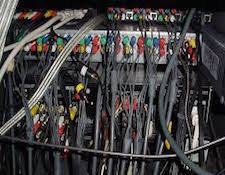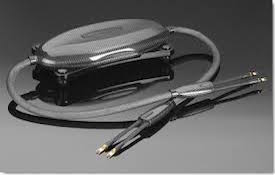It’s the time of year for saving money!
One among the many audio theories is that the ultimate job of a cable or interconnect is to do absolutely nothing. That the cable should not change, color, transform or modify the signal in any way. That whatever goes into one end of of the cable leaves the other completely unchanged. A noble cause to be sure. Despite this noble cause, there’s physics at work. And also design.
 Let’s face it, regardless of the brand of cable used, the signal does experience change. Most audio cables seek to reduce that change to the greatest extent possible. To be sure, there are quite a few designs and options, all of which claim sonic excellence.
Let’s face it, regardless of the brand of cable used, the signal does experience change. Most audio cables seek to reduce that change to the greatest extent possible. To be sure, there are quite a few designs and options, all of which claim sonic excellence.
Many manufacturers promote the idea that it is best to stay with one brand of cable and one style within that brand. So if you are using “ABC’s” cable and the “Model X” series, stay with it. Basically, don’t mix and match. That’s fine, but in real life, differing brands and models of cables and interconnects within a system’s cable loom occur all the time. Whether this is a good or not so good practice is debatable, but it is a common practice.
There is, perhaps, some legitimacy to the notion that differing cable brands may actually benefit being interspersed within a system. This could be for a variety of reasons. Suppose a speaker tends to be a bit bright in a particular room. Maybe one solution is to use a speaker cable that leans towards a darker sound to tame the highs. Or, considering the opposite, using a cable that is very resolving on the top end to “brighten up” the highs. In either scenario, what then, happens to the mids and lows? That’s what makes things interesting and precipitates trial and error — specifically, finding the right cable.
 Some manufacturers have installed on their cables a device to accomplish a variety of purported sonic improvements. Noise reduction and vibration elimination are one of the reasons behind the use of such devices. Additionally, there are cables whose design employs a directionally oriented interface that allows mechanical tuning and optimization of the timbre quality of the signal. Use of cables with either of these type devices varies widely and commands complete support among proponents and skepticism among critics.
Some manufacturers have installed on their cables a device to accomplish a variety of purported sonic improvements. Noise reduction and vibration elimination are one of the reasons behind the use of such devices. Additionally, there are cables whose design employs a directionally oriented interface that allows mechanical tuning and optimization of the timbre quality of the signal. Use of cables with either of these type devices varies widely and commands complete support among proponents and skepticism among critics.
There will, of course, always be those who completely refuse to accept that a power cord, cable or interconnect imparts any sonic improvement whatsoever. They have the happy fortune to wire their system with stock power cords and about $20 worth of lamp cord from the hardware store. They will never accept that a piece of wire can impart any measurable, identifiable sonic improvement. Those with such belief structures are totally resolute in their opinion and entitled to their opinion, and this article does not seek to refute those who so believe.
For those who are convinced that the things that power all the boxes and connect one box to another actually are an important part of the system’s overall quality of output, then a variety of choices are available. There are many cable options born by seemingly endless technologies making the decision “which one” interesting, yet exhausting.
Using cables to optimize the quality of sound output is widely practiced by audiophiles. Some, like me, will use one manufacturer and one or two series of cables by that manufacturer, with consistency the goal. Some will match a specific cable to a component for a specific sonic character. Others still will employ cables with interfaces to obtain optimal results. With improved sonics the unified goal, each method differs based on the manufacturer’s design. It is therefore up to the user to decide which design is right for their system.
And as long as the listener enjoys the music reproduced by their system, regardless of what type of cable is used, regardless of the cost, it may be legitimately concluded that there is no correct or incorrect choice — although there will always be argument about which design is best and if cables can change the sound at all.
Cable technology, design and manufacture vary widely, from the humble lamp cord to the most costly designs available. They vary as much in design as many of the components in our systems. They incite endless debate as to their usefulness and claims. Their proponents and detractors both have immutable opinions on their use.
And I think they all make the hobby just a little more interesting — and sometimes even better-sounding.





